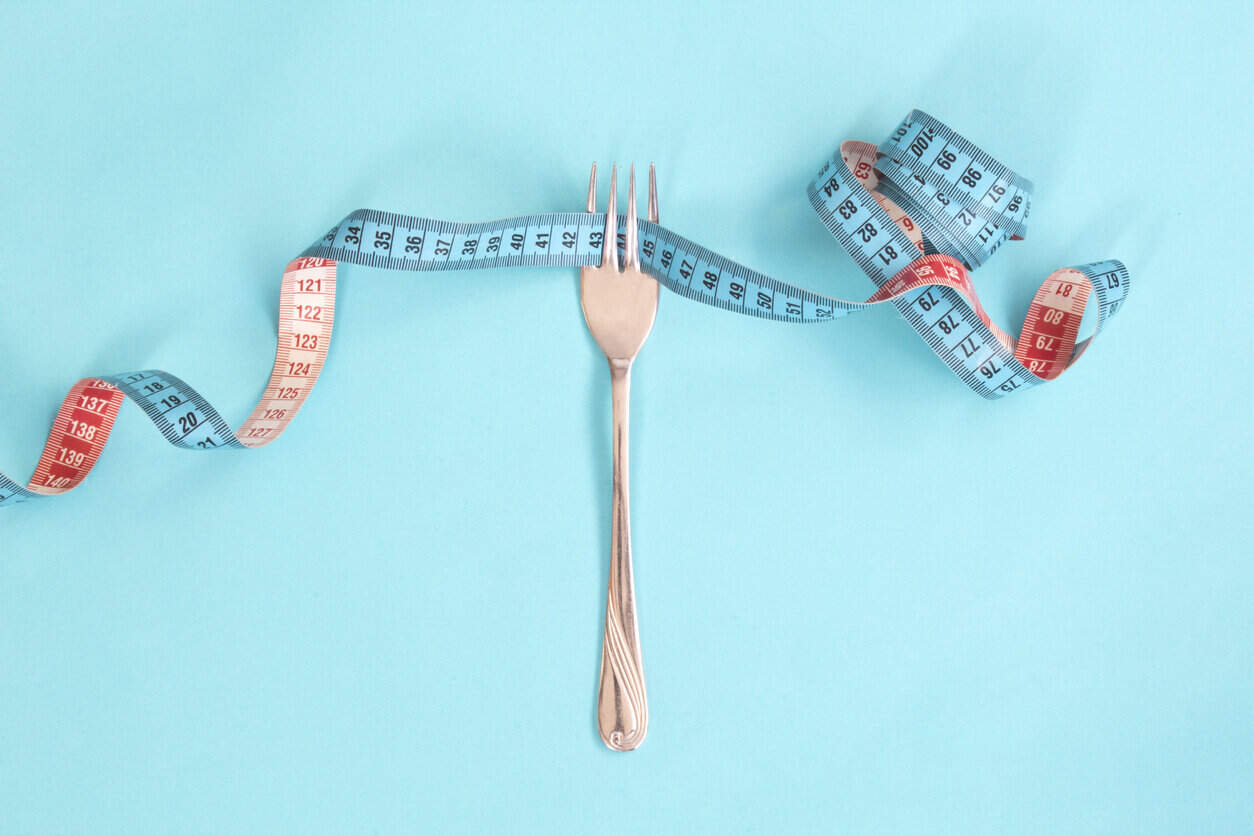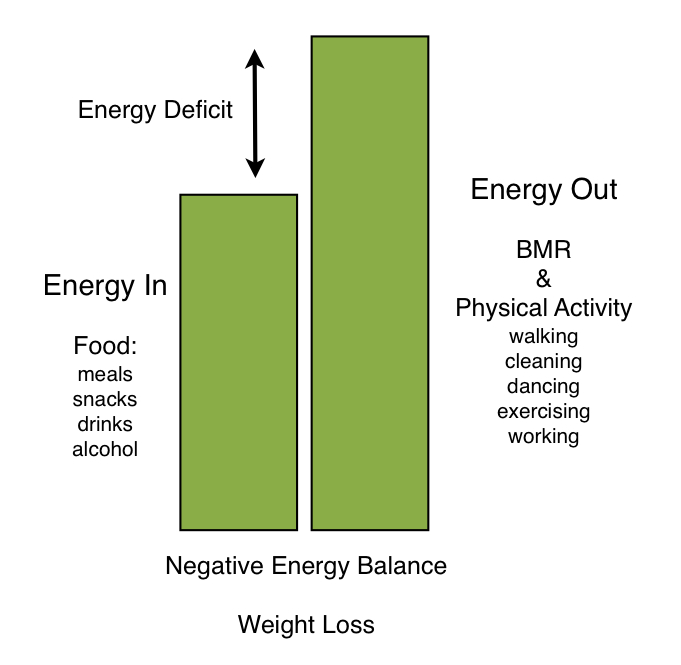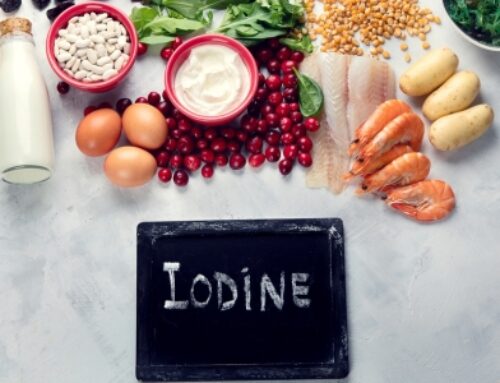
Dietitians and nutritionists talk a lot about energy balance when it comes to losing weight. That’s because the secret to losing weight successfully is in the balance between energy in (food consumption) and energy out (exercise and physical activity).
The truth is this: if you want to lose weight, and specifically lose body fat, then there must be a long term deficit between the energy consumed through food and the energy that we expend through moving our bodies. Very simply put, we must ‘eat less’ and ‘move more’.
Some times this energy deficit can occur naturally. Let’s pretend that you’ve ship wrecked on a deserted island. You’ve got no food and no shelter. You’re alone, left to fend for yourself. After about a month or more (if you survive the island terrors), you’ll have naturally lost a significant amount of body fat. You have to catch your own fish, climb a tree for a coconut, then exert a fair amount of effort getting through the skin of said coconut and pretty much spend most of your day foraging around for berries, nuts and other fruits. Heck, you may even get all ‘Bear Grylls’ and go catch yourself a beast for dinner! The energy that you’re expending in relation to the food thats available for you to eat will be dramatically different to our current environment of sitting at a desk all day (for most of us) and having an abundance of processed energy dense food available to us for no effort at all.
For most of us. Being stranded on a deserted island is not a luxury we can afford. We have to create this energy deficit through careful choices about our food and activity levels. We have to schedule exercise into our day so we move more. Otherwise our day may look like this: Wake up. Sit in the car on the way to work. Sit at your computer desk all day. Sit in the car on the way home. Sit at the table to eat dinner. Sit on the couch and watch TV. Go to bed. We also need to put boundaries in place sound our food choices., because, most certainly, if you eat everything thats offered to you or in front of you everyday, all the time. You’d definitely be consuming too much energy.
Energy In:
All foods and drinks that we put into our mouths (except plain water) contains an amount of energy. Some foods have higher energy values than others but every food contains some amount of energy. In Australia, we measure the energy content of food in kilojoules (kJ) and sometimes it’s measured in kilo-calories (C). To convert from one to the other: 1 C = 4.2 kJ.
Here are examples of the energy content of some foods:
- small fries from McDonalds = 1070 kJ
- large apple = 224 kJ
- low fat blueberry muffin = 859 kJ
- Carbonara Pasta (1 serve) = 5851 kJ
- 375ml can of coke = 675 kJ
- 1 cup skim milk = 355 kJ
- 2 slices of bread = 794 kJ
It’s important to remember that not all calories are equal. The energy content of food, like it’s listed above, is the combination of the energy from all the macronutrients: carbohydrates, fats and proteins. It’s derived by burning the food in a calorimeter and then measuring the temperature change of 1L of water. The body, however, doesn’t burn food like that. Through a complicated series of chemical reactions it slowly releases energy from the carbon bonds contained in the nutrient’s chemical structure. Have I lost you? Not to worry, understanding the chemistry is not as important as understanding this: The energy in an apple is very different from the energy in a glass of coke. Just like the energy in a piece of steak is little different from the energy in a processed sausage.
Energy Out:
Every time we move our body to accomplish a particular activity, we use a value of energy to make that possible. Even lying in bed all day still expends an amount of energy as our body goes about it’s regular tasks of keeping us alive! Our heart beats, our lungs breath, cells grow and divide, tissues are repaired and so on. The minimum amount of energy required to keep us alive (without moving or digesting food) is called our Basal Metabolic Rate (BMR). Any movement our body makes from clapping our hands to running 10km, expends an extra amount of energy on top of our BMR. Even digesting the food we eat requires energy.
The energy expended by our bodies to live, breath, eat and move is dependent upon a number of different factors. These factors are important to consider when trying to lose weight.
- gender – men burn more energy than women
- age – young people burn more energy than older people
- muscle mass – the more muscle mass you have the more energy you will burn
- weight – the higher your body weight the more energy you will burn
Energy Balance
 Now that you understand that food has an energy content and that it costs energy to move and maintain a healthy body we can talk more specifically about energy balance.
Now that you understand that food has an energy content and that it costs energy to move and maintain a healthy body we can talk more specifically about energy balance.
In order to lose weight we must have a long term, negative energy balance. Let me explain these two terms.
A negative energy balance means that the total energy eaten through food must be less than the total energy expended by the body through BMR and physical activity. Therefore, the body must rely on the energy found in our fat stores to make up the difference.
Long term means that this negative energy balance must be maintained over a long period of time (minimum of 3 months) in order to make a significant reduction to our body’s fat stores.
Say you dieted for 5 days, but then the last 2 days of the week you consumed a large amount of food. Even though the first 5 days produced a deficit, the energy consumed over the other 2 days was enough to make your average energy intake too high and thus no weight was lost. This is the frustration that many people experience while trying to losing weight.
You must, must, must be consistent in order to achieve good long term results.
If you’d like further help with your nutrition please click below:



